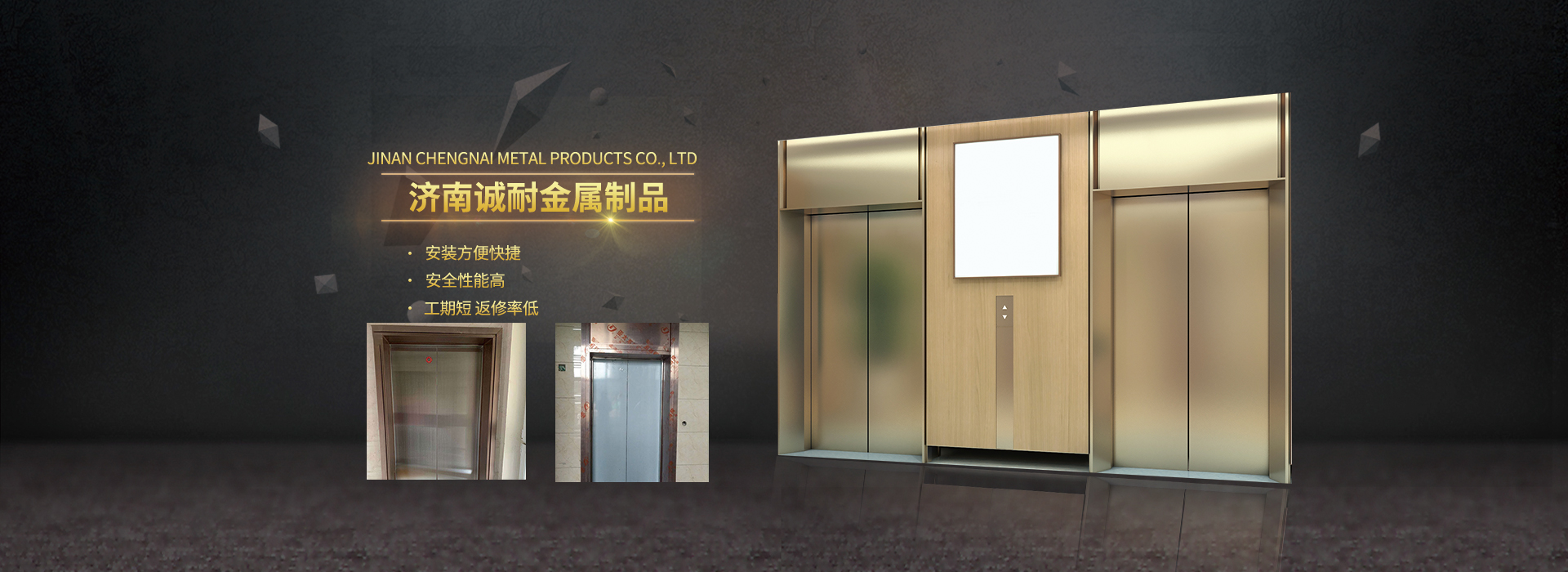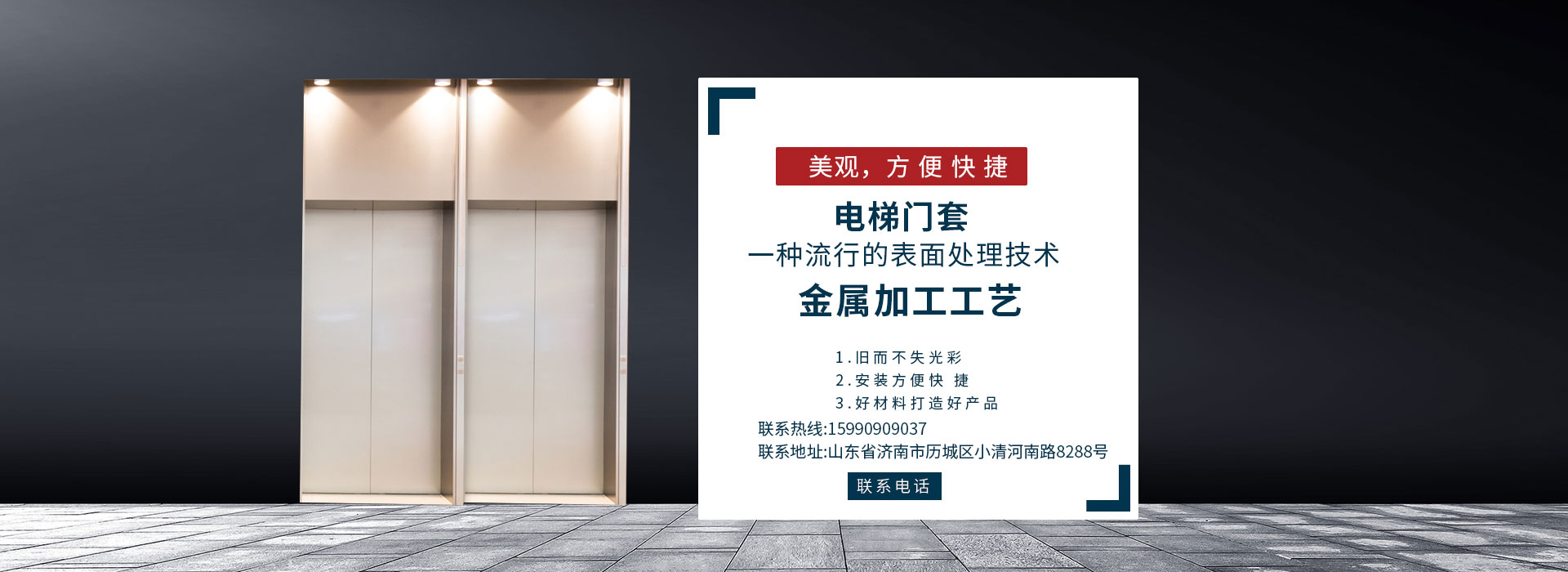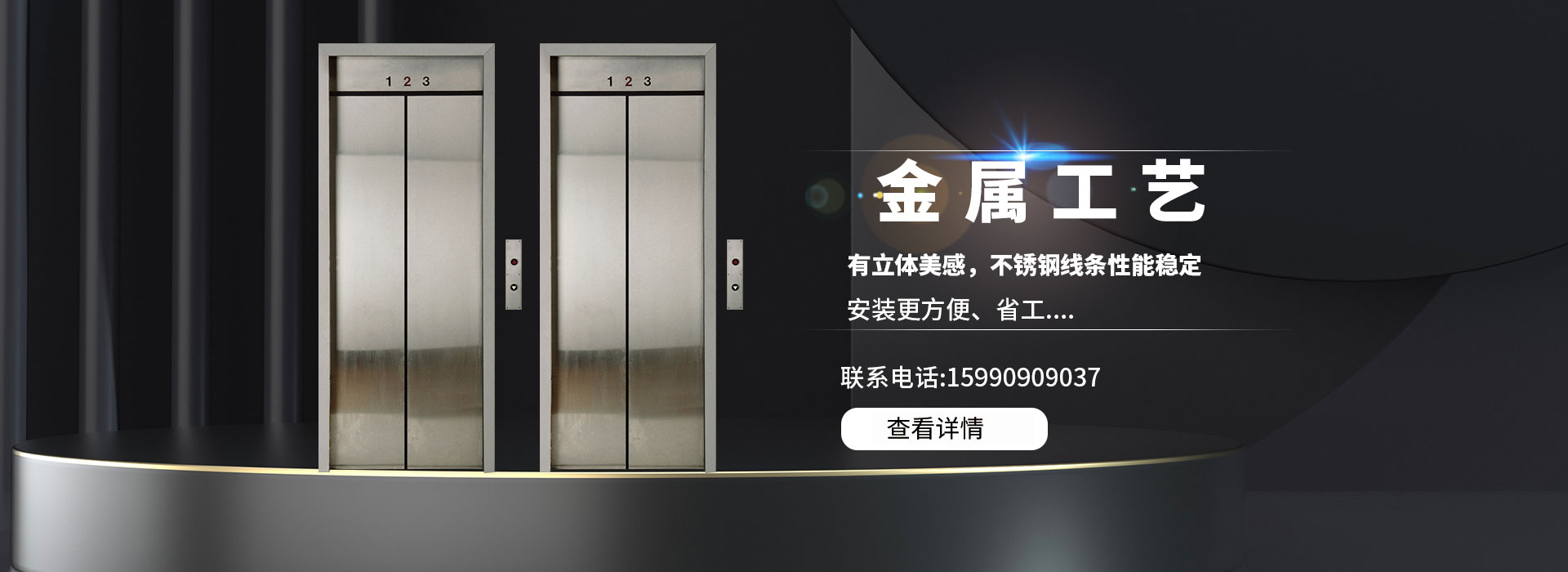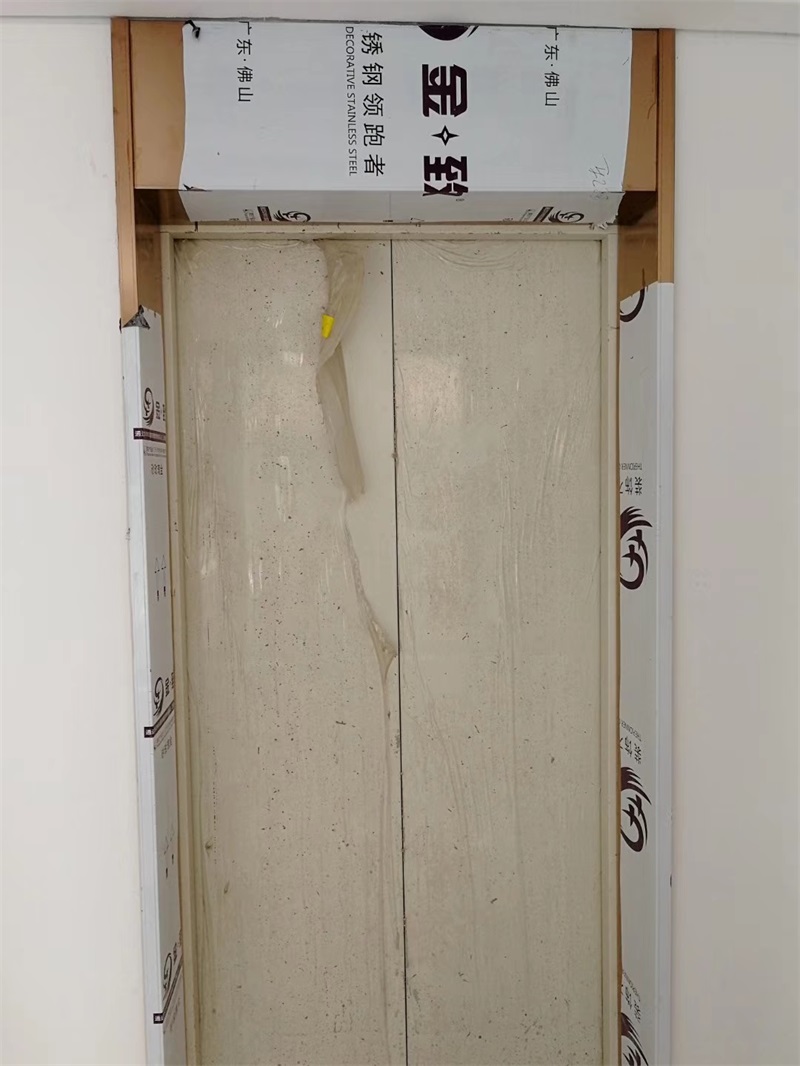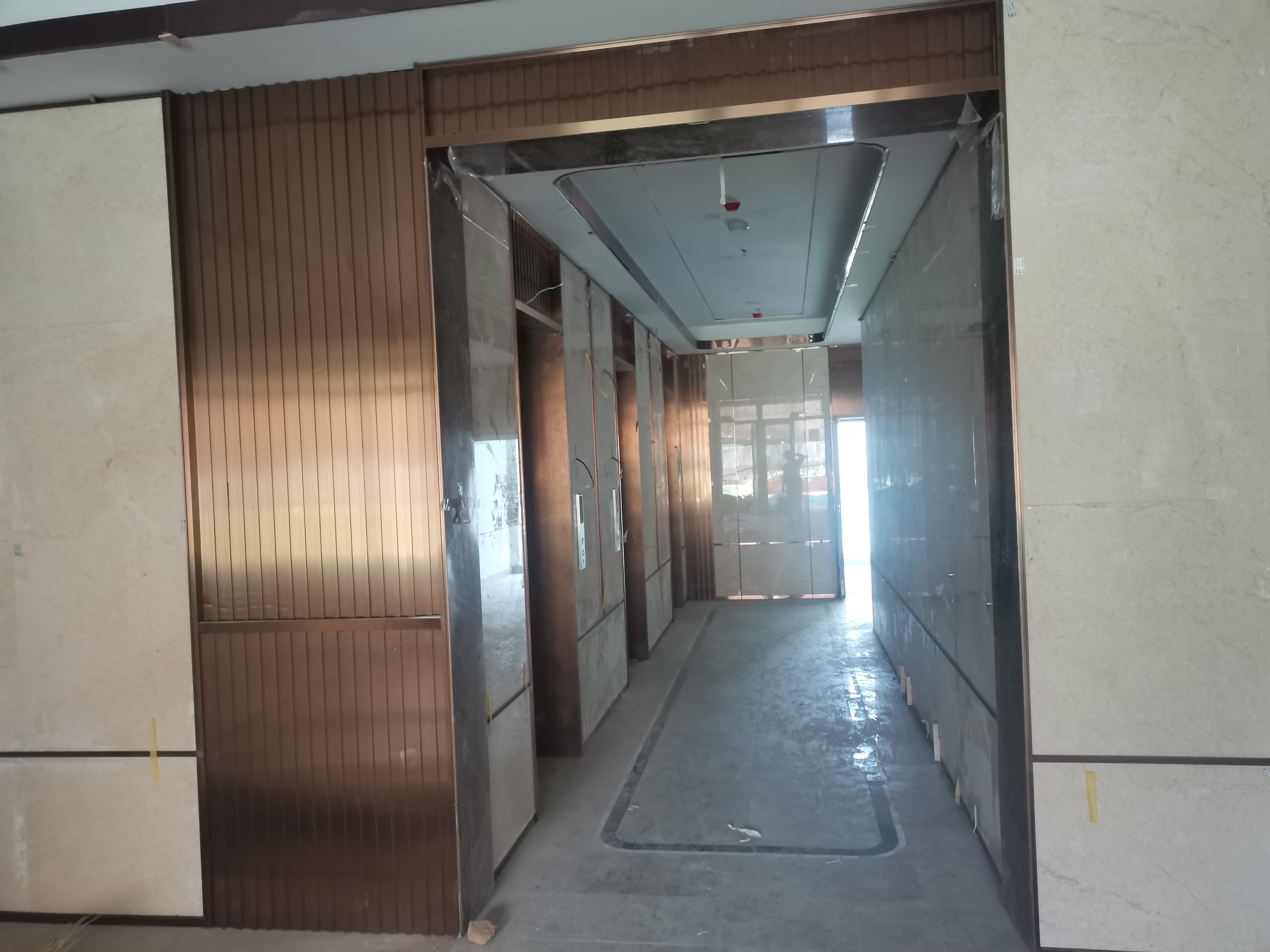電梯用不銹鋼板材表面加工方式
不銹鋼板材經(jīng)過處理后,表面光滑、光亮適度,呈現(xiàn)銀灰色,具有金屬色澤。為使不銹鋼起到豐富裝飾的作用,達(dá)到美觀的效果,受到客戶的歡迎,就必須對不銹鋼進(jìn)行表面加工,加工工藝可分為拉絲、鏡面拋光、鍍色等。
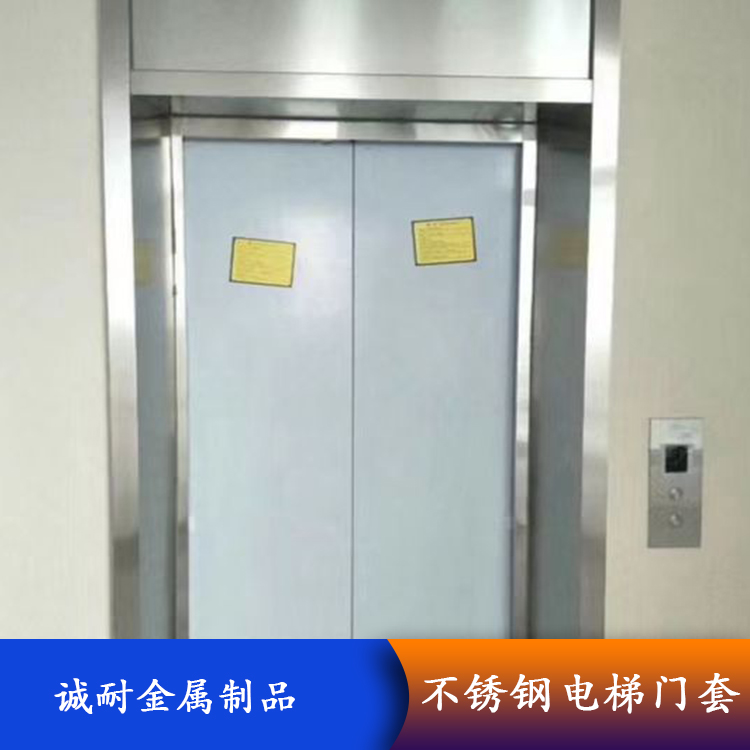
After treatment, the surface of stainless steel plate is smooth and moderately bright, showing silver gray and metallic color. In order to make stainless steel play the role of rich decoration, achieve the beautiful effect and be welcomed by customers, it is necessary to carry out surface processing on stainless steel. The processing process can be divided into wire drawing, mirror polishing, color plating, etc.
目前,這些工藝應(yīng)用于電梯中廳門、吊頂、轎廂面板,起到豐富多樣的裝飾效果,給人們?nèi)A麗的感覺。
At present, these processes are applied to the hall door, ceiling and car panel in the elevator, playing a rich and varied decorative effect, giving people a feeling of luxury and nobility.
本文將簡述不銹鋼拉絲、鏡面、鍍色等表面加工工藝,以及電梯不銹鋼產(chǎn)品后期保養(yǎng)的方法,希望對從事電梯鈑金生產(chǎn)的人員起到一定的借鑒作用。
This article will briefly describe the surface processing technology of stainless steel wire drawing, mirror surface, color plating, and the method of later maintenance of elevator stainless steel products, hoping to play a certain reference role for the personnel engaged in elevator sheet metal production.
電梯廳門、吊頂?shù)炔讳P鋼裝飾件,采用表面處理好的板材加工成形,不銹鋼卷板經(jīng)整平、開料、表面處理、覆膜成板材,加工出來的裝飾件,表面帶有紋路,不需再進(jìn)行表面加工。電梯現(xiàn)場安裝完成后,撕掉保護(hù)膜就能起到相應(yīng)拉絲、鏡面等裝飾效果。
The stainless steel decorative parts such as elevator hall door and ceiling are processed and formed with the surface treated plate. The stainless steel coil plate is leveled, cut, surface treated, and coated into a plate. The processed decorative parts have lines on the surface, and no surface processing is required. After the elevator is installed on site, the protective film can be torn off to achieve the corresponding decorative effects such as wire drawing and mirror surface.
拉絲工藝是不銹鋼各類表面處理工藝當(dāng)中較為常用的一種。板材拉絲是通過砂帶研磨,砂帶快速旋轉(zhuǎn),板材由輸送帶通過砂帶,前面用磨料號數(shù)較大砂帶(磨料號數(shù)越大,粒度越小,切削量越小,易于表面雜質(zhì)),后面用號數(shù)小的砂帶,對金屬表面進(jìn)行打磨,使表面得到一層粗細(xì)分布均勻的宏觀紋路,也會(huì)在一定程度上減少不銹鋼板的厚度(一般減少0.1 ~ 0.2mm)。電梯中不銹鋼板材常用拉絲工藝效果一般為長紋、短紋(雪花砂)、亂紋等,具體工藝方法介紹如下:
Wire drawing process is one of the most commonly used surface treatment processes for stainless steel. The plate drawing is grinded by abrasive belt. The abrasive belt rotates rapidly. The plate passes through the abrasive belt by the conveyor belt. The front uses abrasive belt with larger abrasive number (the larger the abrasive number is, the smaller the particle size is, the smaller the cutting amount is, and it is easy to eliminate surface impurities). The back uses abrasive belt with smaller number to polish the metal surface, so that the surface can obtain a layer of macro-texture with uniform thickness distribution, The thickness of stainless steel plate will also be reduced to a certain extent (generally 0.1~0.2mm). The common drawing process effects of stainless steel plates in elevators are generally long lines, short lines (snowflakes), random lines, etc. The specific process methods are described as follows:
(1)長紋。通過在不銹鋼表面用砂帶機(jī)械來回打磨的方法加工處理后,得到表面狀態(tài)為直線無斷續(xù)的紋路,加工成電梯產(chǎn)品的裝飾效果
(1) Long lines. After the stainless steel surface is processed by sanding back and forth, the surface state is straight without discontinuous lines. The decorative effect of processed elevator products is shown in Figure 2.
圖2 電梯按鈕板
Figure 2 Elevator button board
(2)短紋。砂帶研磨與不銹鋼表面縱向研磨時(shí),砂帶以一定的頻率左右振動(dòng)研磨,其加工表面呈斷續(xù)狀,同時(shí)呈現(xiàn)出一種類似雪花的晶粒效果,所以也稱為雪花砂,加工成電梯產(chǎn)品裝飾效果如圖3 所示。
(2) Short veins. When abrasive belt grinding and longitudinal grinding of stainless steel surface, the abrasive belt vibrates and grinds at a certain frequency, and its processing surface is discontinuous, and presents a grain effect similar to snowflake, so it is also called snowflake sand. The decorative effect of elevator products processed is shown in Figure 3.

(3)亂紋。亂紋又叫和紋,是用砂帶不規(guī)則地上下左右擺動(dòng)研磨而形成的一種無規(guī)則、無明顯紋路的拉絲紋,遠(yuǎn)觀是一圈一圈的旋紋,近觀是雜亂無章的亂紋,因紋路特殊,亂紋耐刻劃性能、抗指紋性能更好,加工成電梯產(chǎn)品裝飾效
(3) Scrub. The random pattern is also called "harmony pattern". It is a kind of irregular and non-obvious drawing pattern formed by grinding the abrasive belt irregularly up and down, left and right. From the far view, it is a circle of spiral pattern, while from the close view, it is a disordered random pattern. Because of the special pattern, the random pattern has better scratch resistance and fingerprint resistance, and is processed into elevator products with decorative effect
拉絲工藝加工紋路的粗細(xì)要深淺一致均勻,產(chǎn)品每一面的紋路根據(jù)設(shè)計(jì)和施工要求,達(dá)到自然美觀的效果,產(chǎn)品的彎位允許有輕微的不影響外觀的絮亂紋路,加工出來的不銹鋼板擁有質(zhì)感。
The thickness of the lines processed by the wire drawing process should be uniform. The lines on each side of the product should be natural and beautiful according to the design and construction requirements. The bending position of the product should allow slight flocculent lines that do not affect the appearance. The processed stainless steel plate has a texture.
我們看到的拉絲不銹鋼能夠清晰的顯現(xiàn)每一根細(xì)微絲痕,使不銹鋼啞光中泛出細(xì)密的發(fā)絲光澤,這么特別的絲狀紋路看得見摸不著(因?yàn)榻z紋比較精細(xì),即使摸上去也不會(huì)有任何感覺)。
The brushed stainless steel we see can clearly show every tiny trace, making the stainless steel matt shine with fine hair luster. Such special filiform lines can be seen and touched (because the filiform lines are relatively fine, even if you touch it, you will not have any feeling).
鏡面在不銹鋼中裝飾檔次較高,加工工藝比拉絲要復(fù)雜,是在原板表面采用機(jī)械式拋光,使表面平坦,光度與鏡面相同,可以分為打磨和出光兩部分。打磨又分粗磨、半精磨、精磨三個(gè)工序,出光分為打蠟、光亮兩個(gè)工序,整個(gè)工序可以總結(jié)為粗磨→半精磨→精磨→打蠟→光亮,操作步驟如下:
The mirror surface is of high decoration grade in stainless steel, and the processing process is more complex than wire drawing. It is mechanical polishing on the surface of the original plate to make the surface flat, with the same brightness as the mirror surface, which can be divided into two parts: polishing and polishing. Grinding can be divided into three processes: rough grinding, semi-fine grinding and fine grinding. The polishing can be divided into two processes: waxing and polishing. The whole process can be summarized as rough grinding → semi-fine grinding → fine grinding → waxing → polishing. The operation steps are as follows:
(1)粗磨。選用料號較小的磨料,一般選用600# 砂帶,往返成直線對板材表面進(jìn)行打磨,去除板材表面雜質(zhì)和粗糙的地方。
(1) Rough grinding. The abrasive with smaller material number is selected. Generally, 600 # abrasive belt is used to grind the plate surface in a straight line to remove impurities and rough places on the plate surface.
(2)半精磨。用800# 砂帶按照步方法打磨表面,主要是對粗磨后產(chǎn)生的印痕進(jìn)一步的細(xì)磨,達(dá)到表面無印痕,基本變亮。
(2) Semi-finish grinding. Grind the surface with 800 # abrasive belt according to the first step method, mainly to further grind the marks produced after rough grinding, so as to achieve no marks on the surface and basically brighten.
(3)精磨。用1000# 砂帶繼續(xù)打磨,主要是對板材表面的細(xì)小紋線修正磨削,板材表面進(jìn)一步變亮,基本接近鏡面效果。
(3) Fine grinding. Continue grinding with 1000 # abrasive belt, mainly to correct and grind the fine lines on the surface of the plate, and the surface of the plate will be further brightened, basically close to the mirror effect.
(4)打蠟。選用羊毛輪和青蠟,在羊毛輪上粘滿青蠟,用上述拋光方法對板材表面進(jìn)行鏡面磨光,本工序主要目的是完成板材鏡面磨光,而不是進(jìn)一步磨削。
(4) Waxing. Select wool wheel and green wax, stick green wax on the wool wheel, and use the above polishing method to polish the plate surface. The main purpose of this process is to finish the plate mirror polishing, not further grinding.
(5)光亮。本工序是一道工序,用干凈的棉布輪對經(jīng)過鏡面后的板材進(jìn)行表面摩擦,目的是將板材表面擦干凈、擦亮。
(5) Bright. This process is the last one. Use clean cotton cloth wheel to rub the surface of the plate after the mirror surface to clean and polish the plate surface.
本文由電梯不銹鋼包邊友情奉獻(xiàn).更多有關(guān)的知識請點(diǎn)http://m.shenhaifb.com.cn真誠的態(tài)度.為您提供為的服務(wù).更多有關(guān)的知識我們將會(huì)陸續(xù)向大家奉獻(xiàn).敬請期待
This article is dedicated by elevator stainless steel binding. For more information, please click http://m.shenhaifb.com.cn Sincere attitude. We will provide you with comprehensive services. We will continue to offer you more relevant knowledge. Please look forward to it
下一篇:不銹鋼電梯門套好在哪里?上一篇:電梯門套的安裝要注意什么?

